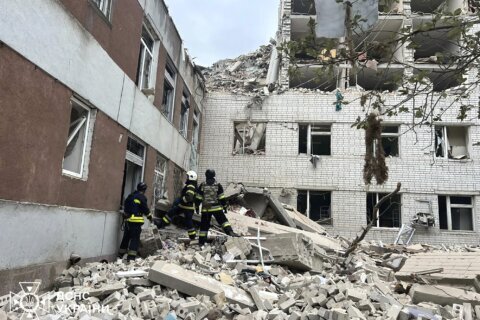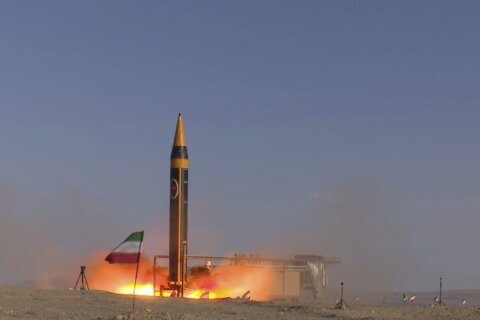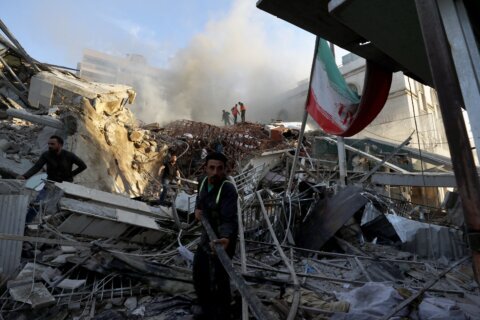NORFOLK, Va. – The high-pitched scraping sound of metal on metal echoes off of the USS Stout as it sits in its berth at the Norfolk Naval Station. A seaman with a hand-held grinder removes rust and debris from the exterior of the Arleigh Burke-class guided missile destroyer.
But the vessel, which was built in 1994, is not a seldom-used naval relic. It remains a key asset in the military’s quest to maintain a strategic advantage over America’s enemies. Two years ago, Tomahawk cruise missiles launched from the Stout rained down on Libyan air defenses as part of Operation Odyssey Dawn. The mission was a decisive action that contributed to Libya’s liberation from the clutches of dictator Moammar Gadhafi.
The spruce-up of the Stout is not unique.
Nearby, a floating naval city called the USS Harry S Truman, with a crew of more than 6,000, rocks gently as the cool water of the Elizabeth River laps against the edges of the boat. Twenty-four stories above the dock on the flight deck of the Nimitz-class aircraft carrier, the occasional clank of dropped hand tools punctuates the drone of heavy machinery at work repairing the deck surface. Painstaking maintenance on the heavy wires and moorings used to arrest incoming F/A-18 Super Hornet fighter jets that land on the deck is underway as well.
Almost 30 miles away, the Flying Checkmates — a Navy squadron of F/A-18s — energetically go through their practice paces at the Oceana Naval Air Station in Virginia Beach. Pilots, weapons officers and maintenance crews are hard at work tweaking their planes, calibrating their monitors and honing their flying skills.
The intense scrubbing down of the fleet and all of its elements is a part of a service-wide effort to prepare for the next chapter in U.S. warfare. The U.S. military’s prowess and technology has commanded the global high ground for decades, but the coming generation of warfare has brought with it new rules and tools, many of which reside in another dimension — the cyberworld.
Even though the Cold War and the Soviet Union are supposed to be distant fading memories, the Navy believes there are still good reasons to maintain a strong presence on the East Coast. The raging conflict in Syria, Iranian nuclear weapons development and periodic reminders that Russia and the U.S. are still military adversaries necessitate a mobile and powerful naval presence near Washington.
“Our usual patrol area would be the Mediterranean, but we could be pulled anywhere in the world based on the geo-politics. This ship is capable of going globally,” says Cmdr. Robert Alpagini, commanding officer of the USS Stout.
With the end of the war in Iraq and the impending U.S. withdrawal from Afghanistan looming, the U.S. Navy is embarking on a new task — assuming a leading role in the military’s rebalance toward the Pacific.
The Navy seems to be suggesting that it’s not looking for a fight in the Pacific, but it’s not shrinking from the growing power of the Chinese Navy.
“While competition between the United States and China is inevitable, conflict is not,” Navy Adm. Samuel J. Locklear III, commander of U.S. Pacific Command, told the National Committee for U.S. China Relations in New York during a recent visit.
Locklear said this approach means “identifying strategic areas where our two countries can cooperate, while recognizing frankly and openly the areas where we will continue to differ and to manage those.”
He said it will be necessary to “manage the friction and disruptive competition and increase areas of congruence and cooperation between our two nations.”
Locklear echoed Secretary of Defense Chuck Hagel’s vision for the future. Success for the U.S. in the 21st century “will, to a large extent, depend on what happens in this critically important region of the world,” Locklear said.
The region is roiled with power grabs dominated by brewing conflicts over land rights, sea lanes and resources. Groundbreaking technological and weapons development in North Korea, along with U.S. government claims of growing Chinese cyber-espionage, are key drivers for the pivot from an antiquated, Atlantic-dominated Cold War military strategy to a next-generation Pacific presence.
As it all unfolds, U.S. political and military leaders seek to remind the world that it, too, is a Pacific power.
The U.S. Navy also has the world’s largest carrier fleet with 10 in service, one under construction (two planned) and two in reserve. The service has 317,054 personnel on active duty and 109,671 in the Navy Reserve.
It operates 288 ships in active service and more than 3,700 aircraft.
Related Story:
Follow @WTOP on Twitter.







